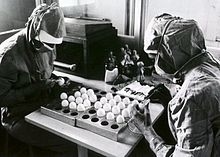Economics of development

One challenge in vaccine development is economic: Many of the diseases most demanding a vaccine, including HIV, malaria and tuberculosis, exist principally in poor countries. Pharmaceutical firms and biotechnology companies have little incentive to develop vaccines for these diseases because there is little revenue potential. Even in more affluent countries, financial returns are usually minimal and the financial and other risks are great.
Most vaccine development to date has relied on "push" funding by government, universities and non-profit organizations. Many vaccines have been highly cost effective and beneficial for public health. The number of vaccines actually administered has risen dramatically in recent decades. This increase, particularly in the number of different vaccines administered to children before entry into schools may be due to government mandates and support, rather than economic incentive.
Patents
The filing of patents on vaccine development processes can also be viewed as an obstacle to the development of new vaccines. Because of the weak protection offered through a patent on the final product, the protection of the innovation regarding vaccines is often made through the patent of processes used in the development of new vaccines as well as the protection of secrecy.
According to the World Health Organization, the biggest barrier to local vaccine production in less developed countries has not been patents, but the substantial financial, infrastructure, and workforce expertise requirements needed for market entry. Vaccines are complex mixtures of biological compounds, and unlike the case of drugs, there are no true generic vaccines. The vaccine produced by a new facility must undergo complete clinical testing for safety and efficacy similar to that undergone by that produced by the original manufacturer. For most vaccines, specific processes have been patented. These can be circumvented by alternative manufacturing methods, but this required R&D infrastructure and a suitably skilled workforce. In the case of a few relatively new vaccines such as the human papillomavirus vaccine, the patents may impose an additional barrier.
Comments
Post a Comment